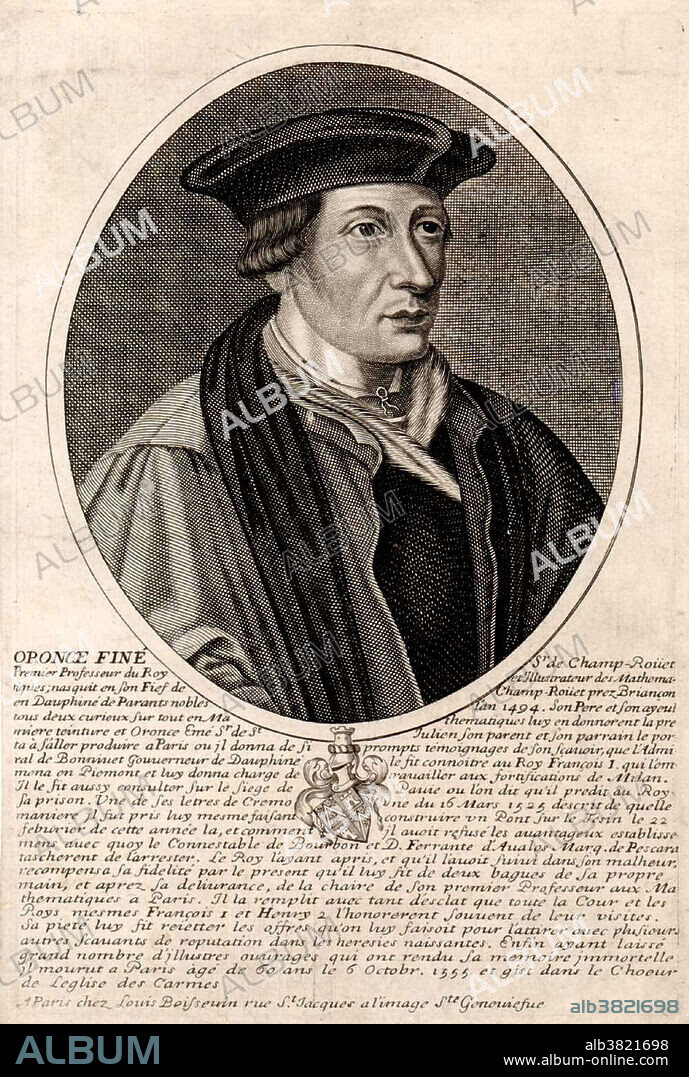alb3821698
Oronce Fine, French mathematician

|
Zu einem anderen Lightbox hinzufügen |
|
Zu einem anderen Lightbox hinzufügen |



Haben Sie bereits ein Konto? Anmelden
Sie haben kein Konto? Registrieren
Dieses Bild kaufen.
Nutzung auswählen:

Titel:
Oronce Fine, French mathematician
Untertitel:
Siehe automatische Übersetzung
Oronce Fine (1494-1555), French mathematician and cartographer. Primarily a popularizer, he was one of the most prolific authors of mathematical books of his age. He worked in a wide range of mathematical fields, including practical geometry, arithmetic, optics, gnomonics, astronomy, and instrumentalism. He gave the value of pi (= 3.1416) to be (22 2/9)/7 = 3.1746 in 1544. Later, he gave 47/15 = 3.1333 and, in De rebus mathematicis (1556), he gave 3 11/78 = 3.1410. In 1542 he published De mundi sphaera (On the Heavenly Spheres), a popular astronomy textbook. His writing on astronomy included guides to the use of astronomical equipment and methods. He also described more recent innovations, such as an instrument he called a metheoroscope (an astrolabe modified by adding a compass). His heart-shaped (cordiform) map projection may be his most famous illustration, and was frequently employed by other notable cartographers, including Peter Apian and
Bildnachweis:
Album / Science Source / Smithsonian Institute Library
Freigaben (Releases):
Bildgröße:
2700 x 4015 px | 31.0 MB
Druckgröße:
22.9 x 34.0 cm | 9.0 x 13.4 in (300 dpi)
Schlüsselwörter:
16. JAHRHUNDERT • 16. JH. • ASTRONOMIE • BERÜHMT • BERÜHMTE PERSÖNLICHKEIT • EUROPAEER (F M) • EUROPAEER • EUROPÄER (F M) • EUROPÄER • EUROPÄISCH • HERZ • ILLUSTRATION • ILLUSTRATIONS • KARTHOGRAFIE • KARTOGRAFIE (KARTE) • KARTOGRAPH • KARTOGRAPHIE • MANN • NOTABEL • PERSON • PERSöNLICHKEITEN • PERSÖNLICHKEITEN • PORTRAIT • PROMINENZ • WERT • WISSENSCH.: ASTRONOMIE • WISSENSCH.: KARTOGRAPHIE


 Pinterest
Pinterest Twitter
Twitter Facebook
Facebook Link kopieren
Link kopieren Email
Email
